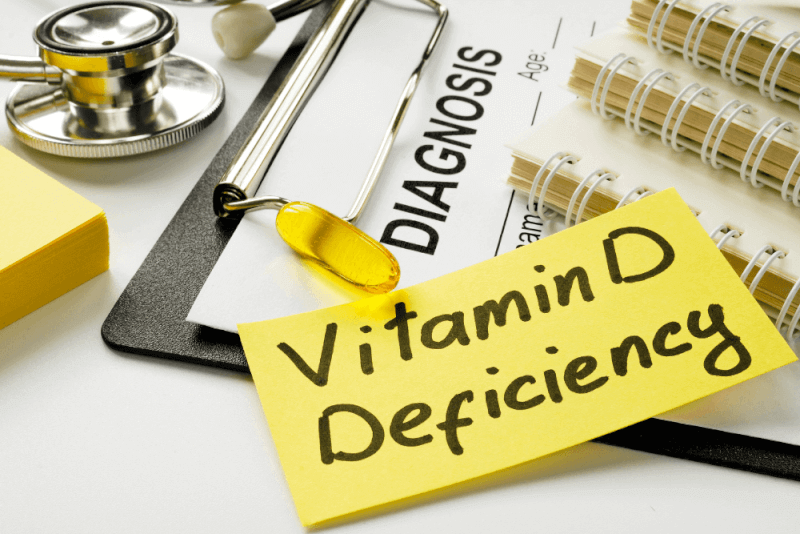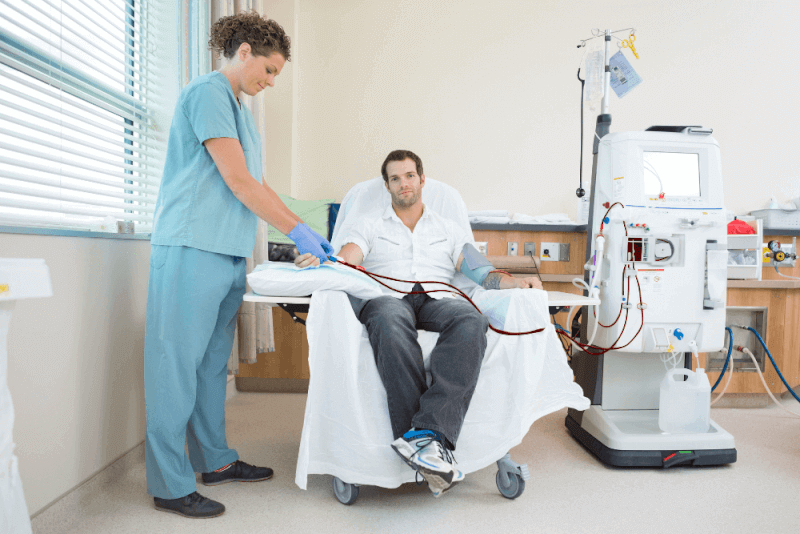What is anemia?
Hemoglobin, which is responsible for carrying oxygen in the blood that gives the blood its red color, is also called red blood cells. A decrease in the number of hemoglobin, a protein, is called anemia.
If anemia is not treated, it causes serious problems in the body. Especially in the case of hypoxia, which is a condition in which not enough oxygen is delivered to the tissues, organs begin to struggle. This puts strain on all internal organs and muscles. It can also cause forgetfulness, body aches, numbness in the hands and feet, and mood disorders.
After anemia is detected, the cause of anemia must also be identified. Appropriate treatment should then be administered to eliminate the cause of anemia and increase the red blood cell count.
Types of Anemia (Anemia)
There are different causes of anemia. These causes can be congenital or acquired.
Sickle Cell Anemia
Sickle cell anemia is a type of blood disorder caused by genetic factors found in both the mother and father of the person. In sickle cell anemia, red blood cells, which are normally ring-like, flexible and red, become sickle-shaped and lose their flexibility. The change in this way is to prevent red blood cells from passing through the capillaries. This can be life-threatening.
Aplastic Anemia
In aplastic anemia, which occurs due to bone marrow failure, the bone marrow cannot produce enough blood cells. In some cases, the failure to produce both red and white blood cells can be life-threatening.
Hemolytic Anemia
The red blood cells of patients with hemolytic anemia complete their life cycle in a shorter time than their normal life span. This type of anemia can be inherited, but can also develop later. In this type of anemia, patients' bodies produce 6 or 8 times more blood cells. Because the destruction of blood cells causes more blood cells to be produced.
Pernicious Anemia
In pernicious anemia, which occurs in people who do not get enough vitamin B12 from food, patients do not have a protein called intrinsic factor produced in the stomach. Deficiency of this protein also causes vitamin B12 deficiency. This causes people to experience pernicious anemia.
Megaloblastic Anemia
It occurs when the body does not have enough vitamin B12 and folic acid. For this reason, it is also called B12 and folic acid anemia.
Anemia in Pregnancy
Pregnancy is one of the reasons that increase the risk of anemia. This is because women's blood volume increases by 50% during pregnancy. However, this increase is usually seen in plasma. Red blood cells do not increase at the same rate as plasma, leading to a decrease in red blood cell concentration. This results in lower values than in the pre-pregnancy period. This condition, which is more pronounced especially in the first period of pregnancy, decreases as the pregnancy progresses. Because red blood cell production increases in the body.
Increased red blood cell production in the later stages of pregnancy increases the need for iron. In this case, iron needs are met from stores in the body. In the vast majority, however, iron stores are insufficient to meet new blood cell production. In this case, pregnant women should be supported with nutrition and iron supplements. If it is not supported, anemia occurs. Anemia during pregnancy is called hemodilutional anemia.
This condition, which affects about 20% of pregnant women, does not show the effects caused by classical anemia. However, it is dangerous if it occurs in the first period of pregnancy.
Causes of anemia during pregnancy
The main causes of anemia during pregnancy are the following:
- Sudden and large blood loss due to trauma
- The developing baby in the womb depletes the mother's stores
- Blood loss due to pathogenic causes such as hemorrhoids
- Folic acid deficiency
- Inadequate iron intake
Symptoms of anemia during pregnancy
Anemia during pregnancy causes the following symptoms:
- Palpitations
- Quick fatigue
- Pale appearance
- Fatigue
- Abdominal pain
- Jaundice
- Pale nail tips
- Dizziness
- Fainting
- Gasping for breath when climbing stairs or taking a walk
Risk factors for anemia in pregnancy
Risk factors that can cause anemia in pregnant women are as follows:
- Use of certain medications
- Digestive system diseases
- Cigarette smoking
- Alcohol use
- Malnutrition
- Multiple pregnancy
Causes of Anemia (Anemia)
There are 3 main causes of non-genetic and acquired types of anemia. These causes are iron, B12 and folic acid deficiency.
Iron deficiency
If iron, one of the most important components of hemoglobin cells, is not present in sufficient amounts, hemoglobin cells cannot be produced and anemia occurs. The anemia that occurs for this reason is called iron deficiency anemia.
In particular, the creation of an iron-poor diet is one of the biggest causes of iron deficiency. In addition, some stomach and intestinal problems can also cause iron deficiency in the body because iron absorption cannot occur sufficiently. Another reason for iron deficiency is that women lose a lot of blood during menstruation.
Folic acid and vitamin B12 deficiency
Insufficient amounts of vitamin B12 and folic acid, which play an important role in hemoglobin production, also cause anemia. Particular attention should be paid to the consumption of red meat and vegetables in order to prevent these deficiencies caused by the diet. Red meat is a reserve of vitamin B12 and iron. Vegetables ensure that the body gets enough folic acid.
Other causes
In addition, causes of anemia not related to genetic factors include trauma or internal bleeding. Chronic diseases can also cause anemia. The main cause of congenital anemia is genetic factors.
Symptoms of Anemia (Anemia)
Symptoms of anemia vary. These differences are due to the type and severity of anemia and underlying health problems such as bleeding and cancer. Therefore, health problems that cause anemia can be detected before anemia. This is because our body has the ability to compensate for the symptoms caused by anemia. For this reason, the symptoms of mild anemia or anemia that progresses slowly over a long period of time may go unnoticed. Symptoms common among anemia types are as follows.
- Insomnia
- Cramps in the legs
- Skin pallor
- Dizziness
- Headache
- Chest pain
- Shortness of breath
- Rapid and irregular heartbeat, especially during exercise
- Easy fatigue
- Energy loss
- Tinnitus
- Pallor of the eyes and nail beds
- Forgetfulness
- Hair loss
- Chills
- Eye darkening
- Restless leg syndrome
- Impaired concentration
Some types of anemia have specific symptoms. These specific symptoms are as follows:
- In patients with anemia due to iron deficiency, symptoms such as the desire to eat ice, soil or paper, cracking of the corners of the mouth, spoon nails are observed.
- Symptoms of anemia caused by vitamin B12 deficiency include numbness in the hands and feet, staggering, loss of sense of touch, difficulty walking, stiffness in the arms and legs, dementia, clumsiness.
- Symptoms of anemia due to chronic bird poisoning include the appearance of blue and black lines on the gums, constipation, abdominal pain and vomiting.
- Specific symptoms of hemolytic anemia include jaundice, sores on the legs, brown or red urine, symptoms due to gallstone formation, and developmental delay in infancy.
- Symptoms of sickle cell anemia include growth retardation, fatigue, severe pain in the joints, limbs and abdomen and susceptibility to infection.
- Patients with aplastic anemia usually have frequent infections, fever and skin rashes.
- In anemia due to folic acid deficiency, symptoms such as diarrhea, irritability and rough tongue surface are observed.
How is Anemia Diagnosed?
Anemia is one of the most common health conditions worldwide. In this case, your doctor will first take a medical history of you and your family. A physical examination will then include listening to your heartbeat, checking for swelling of the spleen and liver and monitoring breathing functions.
If anemia is suspected, a blood test for a complete blood count should be performed first. Additional tests may then be performed to identify the cause of the anemia.
If the complete blood count does not provide sufficient data to diagnose anemia, reticulocyte count, hemoglobin electrophoresis, serum iron and serum ferritin tests are ordered.
If a chronic disease is suspected as the cause of anemia, tests are also performed to diagnose the chronic disease. In addition, if there is bleeding in the intestines, endoscopy and occult blood tests should also be performed. In addition, if anemia is thought to occur due to women's reproductive systems, then a gynecological examination should also be performed.
Anemia Treatment Methods
The main goal of anemia treatment is to eliminate the cause of anemia. If there is a deficiency of iron, B12 or folic acid, then patients should eat a diet based on green vegetables and take supplements if necessary.
In patients with advanced anemia, blood and marrow stem cell transplantation is required. If the cause of anemia is bleeding, then surgical intervention is also possible.











